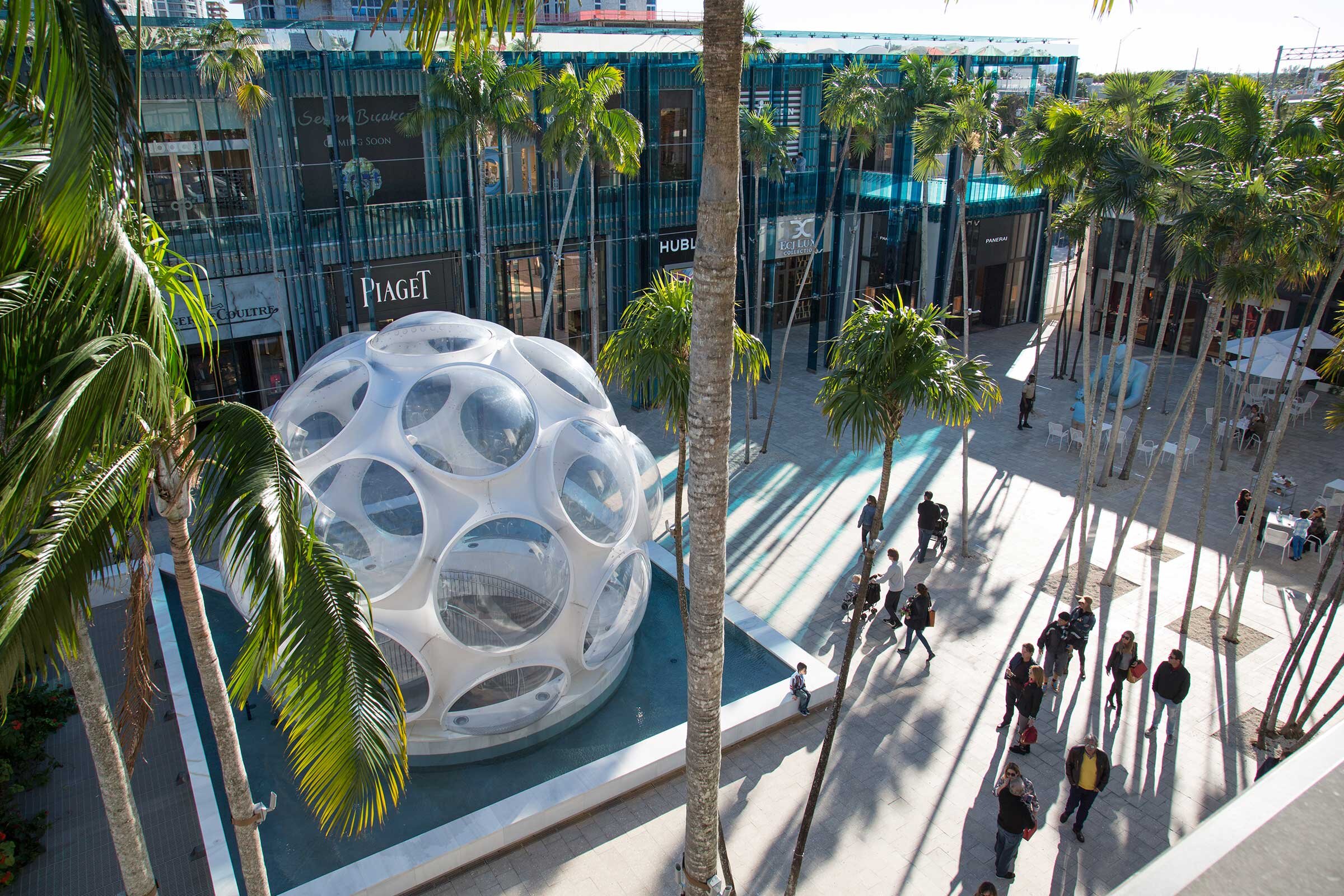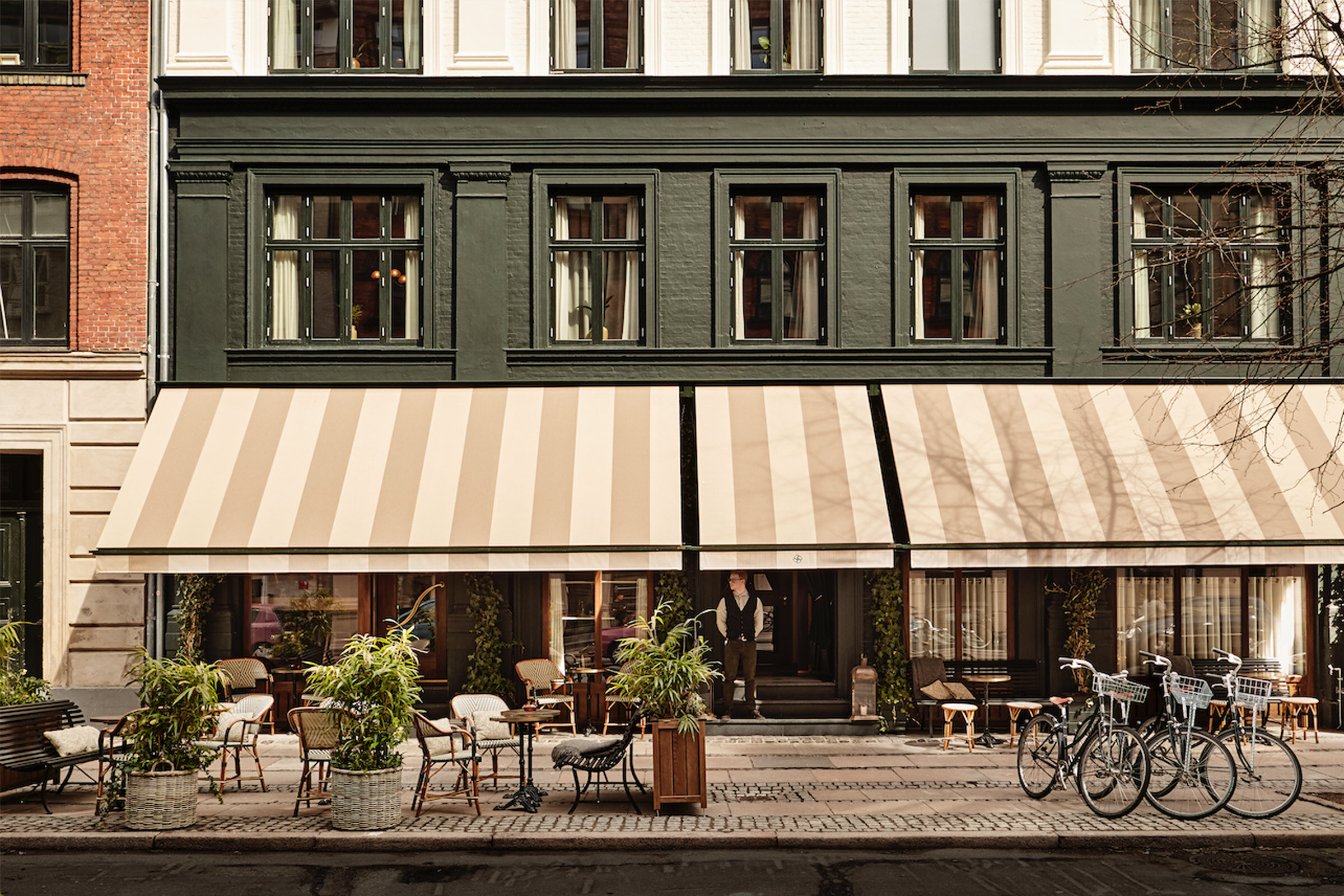A Mini-Guide to Miami

Our guide to the Magic City includes an introduction to Miami’s design history and a round-up of the most exciting and iconic destinations from around the sprawling city
When you think of Miami, you probably think pretty pastels and Art Deco, endless blue skies extending over white-sand beaches strewn with striped loungers and hot bods, and a raucous nightlife set to the beat of throbbing neon lights and Latin beats. However, the Magic City is also one of the world’s leading art and design destinations.
The decision by Art Basel to establish its first international outpost in Miami in 2002 and also launch Design Miami in 2005, along with PULSE Art Fair’s launch in the same year, signalled a new chapter for the city that has since led to a glut of art-centric development and investment, firmly positioning Miami as one of the Western Hemisphere’s art and design capitals.
In many ways, Miami makes logistical sense, straddling the markets of both the English- and Spanish-speaking Americas. But it’s the city’s storied past as a place where Hollywood stars hobnobbed with Latin politicos, mobsters and kingpins that gives it that certain edge and has defined its meteoric rise among the global creative class.
History
Miami is a young city. At the turn of the 20th century when it was first incorporated, it was little more than a coastal swathe of coconut and pineapple plantations built on the edge of a vast marshland. It wasn’t long, though, before prospectors and developers, attracted to its image as a tropical paradise, descended upon its sands and set into motion the first land boom in a history that has been fraught with booms and busts. Miami’s now-famous Art Deco district is itself the product of a development boom that brought the city back from the Great Depression and a devastating hurricane — the first of many that would ravage its shoreline over the years. The Deco movement in Miami is said to have been unofficially sponsored by the drug trade, with kingpins and mobsters investing heavily in outlandish properties that served as money laundering fronts. With corruption rampant and the police in on it as well, the scene flourished, giving birth to the now-iconic architectural stronghold that it is today.
Miami’s struggle with crime and corruption only grew and intensified, with some of the world’s most notorious mob bosses from Pablo Escobar to Al Capone choosing to call it home; its portrayal in Scarface didn’t help the city’s cachet any either. For decades on end, Miami was beleaguered by violent crime, poverty and simmering racial tension between its ever-diversifying populations, which of course included its fiercely anti-Castro Cuban neighbourhoods.
In recent years, however, Miami has successfully rebranded itself as an art destination, playing host to several of the largest art and design shows in the Western Hemisphere. At the same time, it’s kept its raw edge, and vestiges of its not-so-distant-past are still palpable every evening in dimly lit nightclubs draped in velvet and wallpapered with candid shots of some of history’s most glamorous stars and notorious figures.
We’ve rounded up some of the most exciting and iconic destinations from around the sprawling city and its many characterful enclaves to give art and design lovers a concise guide for making the most out of your time in Miami.
Pérez Art Museum, Miami
Brickell
A renaissance is underway in downtown Miami. It used to be that all the action was on the strip of Miami Beach, but increasingly locals are opting to ‘stay on this side of the causeway’ for their weekend entertainment. The award-winning rooftop bar Sugar on the 40th-floor of EAST, Miami (one of the city’s chicest hotels) is responsible in no small way. The surrounding mixed-use development Brickell City Centre is another focal point of the area’s revitalisation. The nearby Pérez Art Museum is a must, housed in a showstopping structure designed by Herzog & de Meuron that boasts substantial verandas framing views out over the causeway. The terrace is scattered with Adirondack chairs between hanging columns of greenery under a canopied overhang, and is a lovely place to rest and take it all in after enjoying the collection, whose focus is on regional art.
Faena Hotel
Faena
The vision of famed Argentinian developer Alan Faena, the district includes the ultra-luxury Faena Hotel, housed in a fully restored, mid-rise Art Deco beauty with a belle époque cabaret that is the talk of the town, as well as an OMA-designed arts centre called the Forum, a high-concept luxury retail offering in Faena Bazaar, and Faena Park — a state-of-the-art, mechanised parking garage. Don’t laugh — parking garages have evolved to art forms in this car-obsessed city, and any trip would be incomplete without a visit to the truly stunning example 111 Lincoln Road designed by Herzog & de Meuron with a boutique luxury retail concept in its midst and rooftop event space.
South Beach
The sweet spot on South Beach is between 5th and 15th Streets along Collins Avenue, where the finest specimens of Art Deco run uninterrupted and the pulse of the city is never more than two blocks from the beach. The Art Deco Welcome Center has helpful information and daily walking tours.
A boardwalk runs the length of Miami Beach and is popular amongst the fitness-obsessed locals. It’s best enjoyed early in the day before the sun peaks, by which point you’ll want to seek refuge in a lounger either at one of many chic hotel pools or the beach; lounge chair service here is par excellence.
Located in a former public library and historic Deco building, The Bass reopened in 2017 after a renovation by David Gauld and Arata Isozaki. The museum is Miami’s foremost contemporary arts institution, with close connections to modern legends like Peter Marino and Jeff Koons.
And while you’re in the neighbourhood, why not take in a show at the New World Center designed by Frank Gehry?
Coral Gables
Set a little further out, the enclave of Coral Gables feels a touch closer to Europe and miles away from the Latin and Caribbean vibes of South Beach. Designed under the planning principles of the City Beautiful movement, the leafy neighbourhood exudes an air of European refinement, such that you almost expect the signage to be in Italian and to catch wanton accordion melodies wafting out of the many small cafes with al fresco dining on linen tablecloths. Built entirely in Mediterranean revival architecture and with a focus on aesthetics and landscaping, Coral Gables is a planned oasis that seems of another time and place.
Wynwood Walls. Image by Ron English
Wynwood
Wynwood is Miami’s newest little darling where, previously wedged between pipeyards and scrap metal depots, underused warehouses lay fertile with artistic potential. Today those warehouses have been converted into a stream of contemporary art galleries, and the arts precinct is fully supported by a host of other hip retail and food and drink options. Add to this a thriving street art scene in which every available wall has been covered by some of the most imaginative and graphic graffiti designs. Wynwood Walls denotes a particular area, but really the entire district is one big graffiti jamboree.
Miami Design District
The brainchild of developer Craig Robins, the Miami Design District is a truly recent phenomenon. A time-lapse through Google street view archives reveals the dramatic transformation that this neighbourhood underwent in a mere couple of years from nondescript warehouse district to luxury shopping precinct clustered around a handful of landscaped streets and art-filled squares.
In the neighbourhood’s Palm Court, a Fly’s Eye Dome based on a design Buckminster Fuller was working on at the time of his death takes pride of place alongside a stunning hand-painted glass fin facade by Japanese architect Sou Fujimoto — in fact, many of the surrounding store facades were designed by A-list architects. On an upper terrace, Konstantin Grcic’s Netscape is a fun and interactive art installation.
You’ll also want to visit the Institute of Contemporary Art, Miami and check out the ‘chewing gum-like’ installation Elastika by Zaha Hadid in the adjoining Moore Building.
Just a bit further north, the MiMo District — MiMo meaning Miami Modern, the local answer to mid-century modern — is the site of a series of iconic architectural landmarks dating from the 1950s and 60s. Recently, many have been restored to their former glory, including the Vagabond Hotel with its eccentric cantilevered porte cochère, the Shalimar Motel and the New Yorker Hotel. While there are boutiques and independent shops in the area, a simple drive down the strip to take in the iconic architecture may be enough, preferably at dusk when the neon kitsch is in full expression.
This article first appeared in issue 14 of In House magazine, December 2016, published by Fifth Black for Swire Hotels










